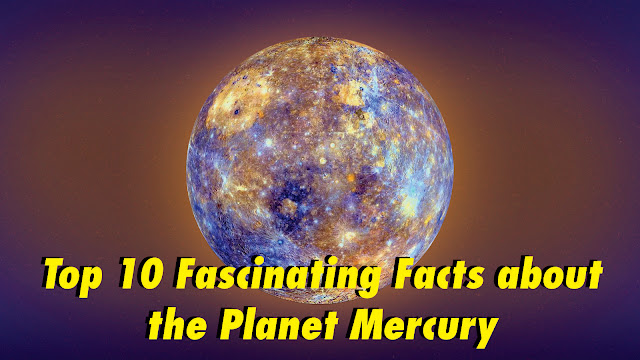Exploring the Mysteries: Top 10 Fascinating Facts about the Planet Mercury
Introduction:
Mercury, the closest planet to the Sun in our solar system, is a captivating celestial body that has intrigued astronomers for centuries. Known for its unique characteristics and intriguing features, Mercury offers a wealth of knowledge for those interested in planetary exploration. In this article, we present the top 10 intriguing facts about the planet Mercury that will take you on a journey through its wonders.
1. Proximity to the Sun:
Mercury holds the distinction of being the closest planet to the Sun, orbiting at an average distance of about 58 million kilometers. Its proximity means that temperatures on Mercury's surface can soar to scorching highs of around 430 degrees Celsius during the day while dropping to a frigid -180 degrees Celsius at night.
2. Eccentric Orbit:
Mercury's orbit is highly eccentric, which means it deviates significantly from a perfect circle. This eccentricity causes its distance from the Sun to vary throughout its orbit. Consequently, Mercury experiences extreme temperature fluctuations due to its elliptical path around the Sun.
3. Slow Rotation:
Mercury has an incredibly slow rotation, taking approximately 59 Earth days to complete a single rotation on its axis. Interestingly, Mercury's rotational period is nearly two-thirds of its orbital period, resulting in a peculiar phenomenon called "resonant rotation."
4. Crater-Scarred Surface:
Mercury's surface is pockmarked with numerous impact craters, similar to the Moon's surface. These craters are a result of its exposure to countless collisions with asteroids and comets over billions of years. The most extensive crater on Mercury, known as the Caloris Basin, spans about 1,550 kilometers in diameter.
5. Lack of Atmosphere:
Unlike many other planets, Mercury has a virtually nonexistent atmosphere. The planet's weak gravitational pull is unable to retain gases like nitrogen and oxygen, leading to a vacuum-like environment. Consequently, Mercury's surface is constantly exposed to the harsh conditions of space, including solar winds and micrometeoroid impacts.
6. Iron Core:
Mercury boasts an exceptionally large iron core, making it the planet in our solar system with the highest metal content. Scientists believe that this unique feature is the result of a massive impact early in its history, which stripped away much of its outer layers.
7. Tenuous Magnetic Field:
Despite its small size, Mercury surprisingly possesses a weak magnetic field. This magnetic field is about 100 times weaker than Earth's and is thought to be generated by the dynamo effect caused by the planet's molten iron core.
8. Extreme Temperature Variations:
Due to its lack of an atmosphere and close proximity to the Sun, Mercury experiences some of the most extreme temperature variations in our solar system. The side facing the Sun can reach blistering temperatures, while the night side plunges into an icy chill. This stark temperature difference contributes to the planet's fascinating geological features.
9. Scarce Volatile Elements:
Mercury's surface is notably scarce in volatile elements such as carbon and sulfur. The intense heat and solar wind bombardment likely caused these volatile substances to evaporate or be driven deep beneath the planet's surface over time.
10. Elusive Water Ice:
In 2012, NASA's MESSENGER spacecraft discovered intriguing evidence of water ice in permanently shadowed craters near Mercury's poles. Despite the planet's proximity to the Sun, the deep craters create areas where sunlight never reaches, allowing water ice to accumulate in these extreme cold regions.
Conclusion:
Mercury, with its peculiar characteristics and rich history, continues to captivate scientists and space enthusiasts alike. From its blistering surface temperatures to its volatile past, this enigmatic planet offers a glimpse into the fascinating complexities of our solar system. Exploring Mercury's mysteries further may unlock valuable insights into the formation and evolution of planets in general, broadening our understanding of the cosmos.













0 Comments